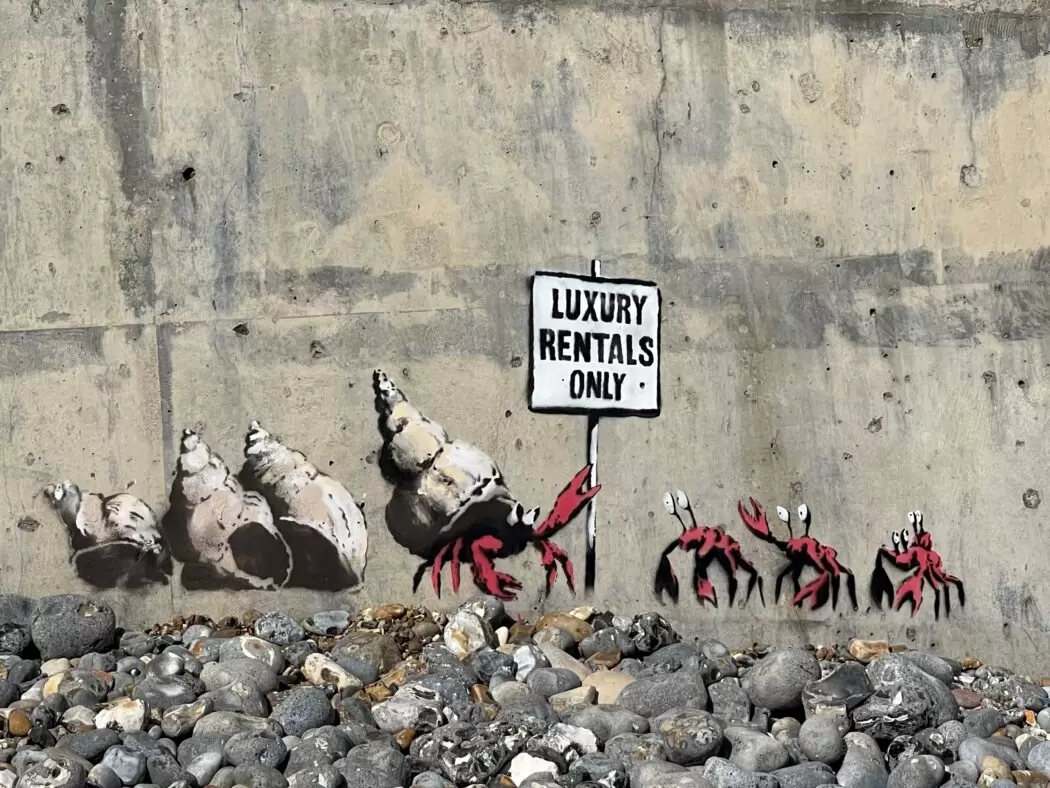The .Art Market Recap: Taiwan Protecting their Relics, Rare Gems Discovered in Bahamian Shipwreck, Tiffany’s Collaborating with CryptoPunks and more Art Crime in Italy
This week we have it all! Taiwan Preparing for Evacuation of Relics, A 350 Year Old Shipwreck Reveals New Treasures, Cheersing to Olafur Eliasson, NFTiffany & co.? and Italian Art Crimes with Russian ties


Featured image: The National Palace Museum, Taipe, Taiwan. Photo by CEphoto, Uwe Aranas
Taiwan’s National Palace Museum is preparing to evacuate its treasures in case China invades. Having learned from the conflict in Ukraine, Taiwan is preemptively moving treasured works to safeguard in the event of an invasion just as the staff at the National Museum in Lviv had done. According to CNN, “the museum said it would focus on saving around 90,000 relics from its 700,000-strong collection, prioritizing artifacts of higher value and those that take up less space.”
Boasting one of the world’s most comprehensive collections of Chinese imperial relics, Taiwan’s National Palace Museum has been conducting its first-ever “wartime response exercise” focused on evacuating artifacts. “The most important goal of this exercise is to let our staff know who is doing what if war breaks out, and how to react,” museum director Wu Mi-cha told CNN prior to the training session. Approximately 180 staff members were trained on how to respond to a variety of scenarios, including how to request military or police aid if security facilities were damaged by enemy forces. “Whether we need to evacuate the artifacts is subject to the commander-in-chief if there is a war. That said, the museum needs to prepare itself now, so that we can act immediately if we receive such orders,” museum officials said.
Naturally, due to security and safety reasons, the museum did not disclose where the evacuated items would be stored or how they would be transported.

Parts of the imperial collection shown outside the Forbidden City’s Gate of Supreme Harmony in Beijing before they were moved south to Shanghai and Nanjing. Credit: National Palace Museum
Olafur Eliasson unveiled a kaleidoscopic tasting pavilion at Donum Estate, one of California’s leading Pinot Noir producers. Partnering with architect Sebastian Behmann, the colourful pavilion took three years to complete from inception to unveiling, largely in part to COVID-19 restrictions and relied heavily on Zoom meetings and site supervising.
Allan Warburg said at the August 1st unveiling of Eliasson and Behmann’s “Vertical Panorama Pavilion” (2022), which was commissioned for the estate that: “When you take beautiful art and you put it into a beautiful landscape and you enjoy some great wine together, it’s a much larger experience than if you enjoy each one of them by themselves…I will bet that our wine, if you taste it in here, will taste better than if you are tasting it anywhere else.”
“There are so many ways that art and architecture can either dance or fight together. Working with Sebastian has made me a better artist and him a better architect,” Eliasson tells The Art Newspaper. “It’s like that old expression ‘one and one makes 11’. Sebastian and I are 11 when we work together.”
The pavilion was designed to accommodate an intimate group of 12 guests and prioritized the natural effects of wind and sunlight in the design of the structure. Distilled to the bare essentials of the structure, no texts, plaques or headsets have been integrated into the space to keep focus on the experience of the structure.

Vertical Panorama Pavilion at the Donum Estate, 2022, by Studio Other Spaces (Olafur Eliasson and Sebastian Behmann) Photo: Adam Potts
A new expedition in the Bahamas has recovered a trove of priceless artifacts from the shipwreck of The Nuestra Señora de las Maravillas (Our Lady of Wonders) dating back over 350 years ago. Jewel-encrusted pendants and gold chains among various coins, jewelry pieces and loose gems will be on display at the new Bahamas Maritime Museum later in August.
“When we brought up the oval emerald and gold pendant, my breath caught in my throat,” Carl Allen, founder of Allen Exploration, told the Guardian. “I feel a greater connection with everyday finds than coins and jewels, but these Santiago finds bridge both worlds.” He added, “The wreck of the galleon had a tough history – heavily salvaged by Spanish, English, French, Dutch, Bahamian and American expeditions in the 17th and 18th centuries, and blitzed by salvors from the 1970s to early 1990s. Some say the remains were ground to dust. Using modern technology and hard science, we’re now tracking a long and winding debris trail of finds.”
Multiple other exquisite pieces were salvaged including chains and pendants likely crafted for very wealthy or royal aristocrats. In addition, a rare scallop-shaped Indian bezoar stone was found which was valued in Europe at the time for its healing properties. The stone was also a symbol for travelers on the religious Santiago de Compostela pilgrimage and is among the finds linked to the military-religious knights Order of Santiago who protected pilgrims on their journeys and participated in Spain’s maritime trade.

Artifacts recovered from the wreck of the Maravillas. © BRENDAN CHAVEZ, COURTESY ALLEN EXPLORATION
Jeweler Tiffany & Co. announced on Sunday July 31st that the company would be collaborating on a collection of NFTs and corresponding CryptoPunk-ified jewelry. The pieces will go up for sale on August 5th exclusively on the brand’s new NFT site, aptly named, “NFTiff.”
Potential buyers have to already own a CryptoPunk piece. NFTiff will function as a pass that will allow collectors to purchase customized Tiffany pendants and necklaces and as an added bonus, the buyer can also purchase an additional digital rendering of the pendant as an NFT itself. The latter option will be powered by Chain. The full package will cost 30 ETH, which converts to about $50,0000 or approximately 30% of the average cost of a Punk.
The NFTiffs are limited to an edition of 250, and owners of any Punk will be allowed to purchase up to three necklaces. For the pendants themselves, Tiffany’s designers colour match in enamel and gemstones replicas of the Punks. This collab is another example of art and luxury brands partnering in creative marketing and product ventures mutually elevating each other with the unique partnership.

Courtesy of Tiffany & Co.
Italy’s tax police, the Guardia di Finanza, announced that they have seized more than $144 million USD worth of assets from architect Lanfranco Cirillo, who famously designed the estate known as “Putin’s Palace” on Russia’s Black Sea.
Works of art, jewelry, cash, luxury properties, and a helicopter were among the seized assets. Cirillo’s lawyer said in a statement that “the architect, who is in Moscow, is very disappointed by the fact that having bought some prestigious properties and works of art in Italy, and having provided for his wife and daughter, are used to argue that he faked his move abroad.”
In February 2022, officials had raided the architect’s villa in Roncadelle, near Brescia, for allegedly failing to pay a $51 million USD tax bill. Authorities ended up seizing a collection of works by artists including Pablo Picasso, Lucio Fontana, Paul Cézanne, and Wassily Kandinsky. The raid was part of ongoing investigations into Cirillo’s alleged financial malfeasance from 2013 to 2019. Importantly, the raid uncovered that many of the blue-chip paintings were not registered with authorities per Italian law, adding another charge against the architect.
Russian opposition leader Alexei Navalny first brought news of Putin’s so-called “New Versailles,” designed by Cirillo, in 2021 when he posted a YouTube video exposing the luxury property purportedly owned by Putin, and called for protests against government corruption.

Digital reconstruction of the courtyard of ‘Putin’s Palace,’ as seen in a January 17 YouTube video posted by Alexei Navalny.





